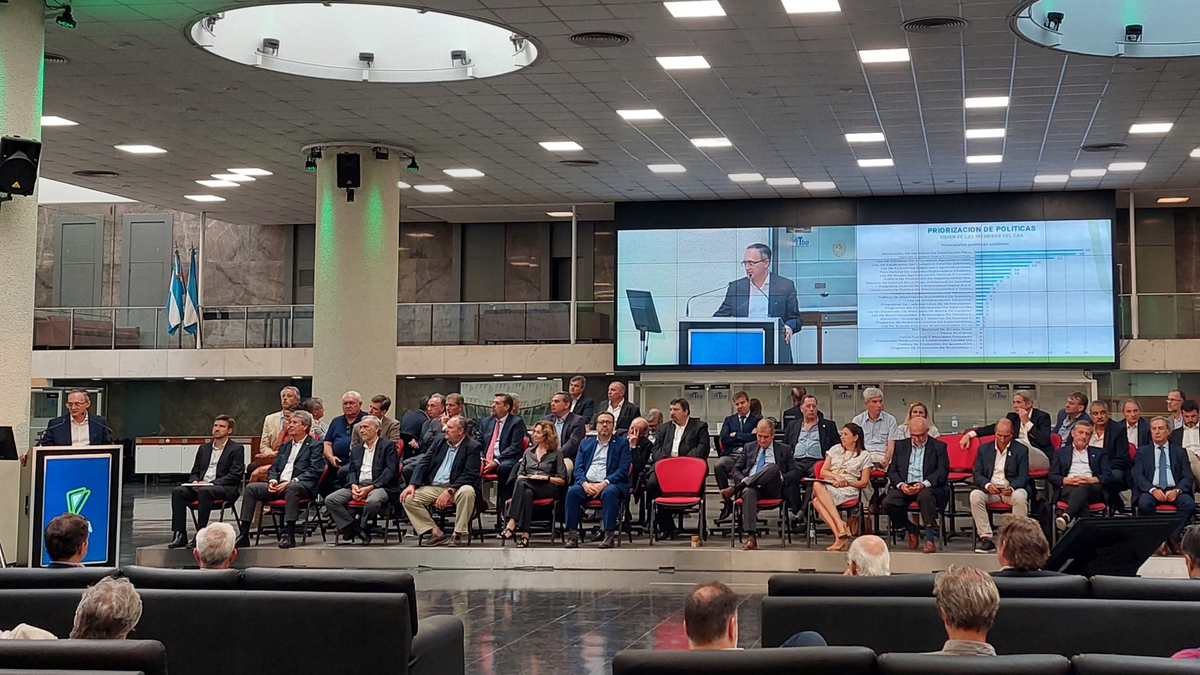The general coordinator of the CAA, Jose Martinsstressed that the proposal “is the fruit of a year of work between all the entities that make up the Council and represent the agro-industrial value chains throughout the country.”
Likewise, he indicated that consultations were carried out with other entities and referents “to seek to integrate their visions“.
Martins explained that under this objective they identified “the needs and opportunities of each production and what we could contribute to Argentina”.
“With the Federal Agroindustrial Plan 2023/2033 we seek to expose all that: our needs and our potentialour diagnosis and our proposals”, highlighted the president of the Grain Exchange of Buenos Aires.
Regarding the plan, he specified that it is based on seven pillars: “first, federal, productive, innovative, inclusive and sustainable agro-industrial development“, adding that “secondly, the export development and international integration“.
He also remarked that “in third place is the food safety and productive and social integration”, and completed that “in the fourth pillar, environmental and social sustainability, connectivity and development with labor equality“.
“The following pillars are dedicated to proposals in logistics, infrastructure, technological innovation and the role of the State“Martins pointed out.
According to the presentation distributed by the CAA, the fiscal impact would represent a net collection of US$32,517.
fiscal impact agroindustrial plan.png
The proposal occurs in a context of falling liquidation due to the impact of the drought. He The agro-export sector liquidated almost US$650 million in February, 74% less than in the same month of 2022 and 30.5% less than in January of this year, as reported by the Chamber of the Oil Industry of the Argentine Republic and the Center for Grain Exporters (CIARA-CEC), which brings together the entities that represent 48% of the exports.
For his part, the technical coordinator of the CAA, Gustavo Idigoras, He stated that “there are a series of necessary conditions for the fulfillment of the objectives of this Plan.”
“Those of us who make up the CAA need to have a stable macroeconomy, competitive infrastructure, production-oriented public investment; and a monetary, credit, fiscal policy consistent with production and expansive foreign tradeincluding a unique and competitive exchange rate“, said the president of the Chamber of the Oil Industry (Ciara) and the Center for Grain Exporters (CEC).
Meanwhile, the president of Coninagro, Elbio Laucirica, stressed the need for investment incentive measuresthe need for a agricultural risk law and climate changethe implementation of a regime of incentives for the adoption of good agricultural practices and ecosystem servicesguarantee access to national and imported inputs without restrictions, and the unification of sanitary standards at the national level.
https://twitter.com/AgroindArg/status/1631013441916813313
We present our Federal Agroindustrial Plan 2023/2033.
Proposals for the sustainable development of Argentine agro-industry: to generate USD 100 billion annually in agro-industrial, forestry and fishing exports and 878,000 new jobs in 10 years. pic.twitter.com/KKNNawjOwZ
— Argentine Agroindustrial Council (@AgroindArg) March 1, 2023
Source: Ambito




